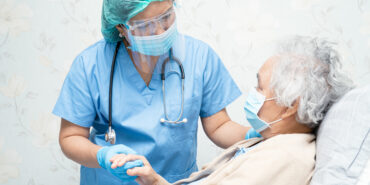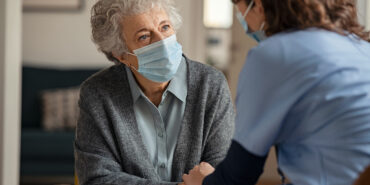RHP Risk Management’s Certified Industrial Hygienists, Health Scientists, and Certified Safety experts employ their experience and training to advise and guide industry and business leaders in navigating the uncertainties and challenges presented during and after a pandemic such as a coronavirus disease (COVID-19). RHP’s ventilation validation assessments, employee respirator fit testing and development of a return to work / infectious disease plan will keep your facility in compliance with OSHA.
In March 2021, OSHA announced a new National Emphasis Program that set a target on 21 primary target industries and 32 secondary target industries that OSHA classifies as ‘high-hazard industries’ for placing workers at increased risk of exposure to COVID-19. Over the next 12 months, OSHA has committed to conducting facility inspections in 53 targeted industries that include retirement communities, assisted living facilities and nursing care facilities.


The NEP is an initial action by OSHA in a campaign to protect workers from infectious communicable diseases including COVID-19. By taking proactive measures, employers and business owners, can protect their employees and manage their workplaces for any meetings or inspections by OSHA.
Through this NEP, OSHA has the authority and is charged with inspecting facilities within the target industries whether with or without notice. If a facility is found to be in non-compliance of the general duty clause and specifically in regards to guidance of reducing virus transmission, including personal hygiene, employee training and most importantly ventilation, an employer and/or facility owner may be at risk of a violation notice, citations and expensive fines. The General Duty Clause gives OSHA tremendous leeway to make determinations about what constitutes an unsafe workplace for virus transmission.
By following current best-practice guidance from authoritative entities like OSHA or the Centers for Disease Control and Prevention (CDC), an employer is in a strong position to show compliance and risk reduction. Through testing and validation of your business engineering and administrative control measures such as building ventilation, employee PPE, training and personal hygiene, RHP scientists provide the data and documentation of the efficacy of your plan. By certifying these measures, employers reduce their company’s liability risk and their employees health risk in the workplace and positions a business for compliance under the OSHA NEP (or potential future ETS).
RHP works with business owners and facility engineers to assess ventilation system performance in buildings and use cutting-edge technology like DNA-tagged aerosol tracers, to directly measure how well a building performs to reduce indoor spread of infectious aerosols; providing objective evidence that demonstrates the benefits and efficacy of risk reduction efforts, and positions you for regulatory compliance and a healthy workplace.
Along with our ventilation capabilities, RHP assists employers with determining appropriate PPE for their industry, employee fit and respiratory fit testing, and validating an employer’s written safety plans and procedures, ensuring a safe and healthy return to work.
RHP Risk Management works closely with facility owners, employers and public entities to provide customized ventilation assessment services and our experts are a trusted source for managing, mitigating, and controlling health risks in the workplace through the anticipation, recognition, evaluation, and control of environmental and occupational hazards. With many uncertainties associated with indoor air quality concerns, hazards, and risks, RHP’s staff of public health professionals provide customized best-practice guidance and can assist with the development and implementation of customized building ventilation solutions.
Contact RHP for an initial consultation or call (773) 867-6010 to discuss how RHP’s solutions can help ensure your business is prepared should OSHA select your facility for a site inspection.
